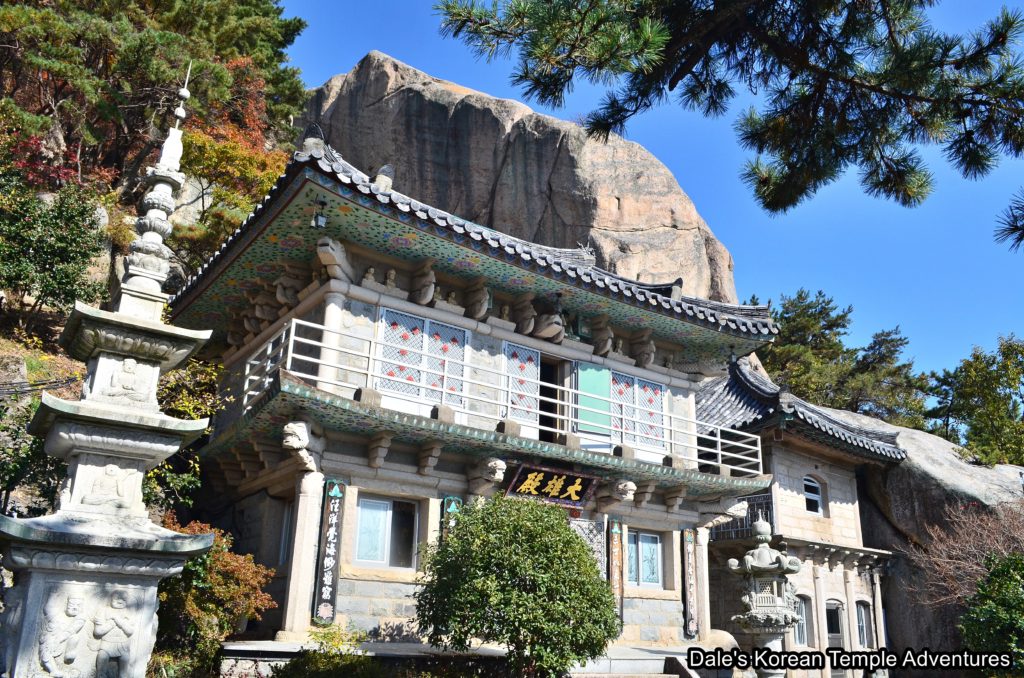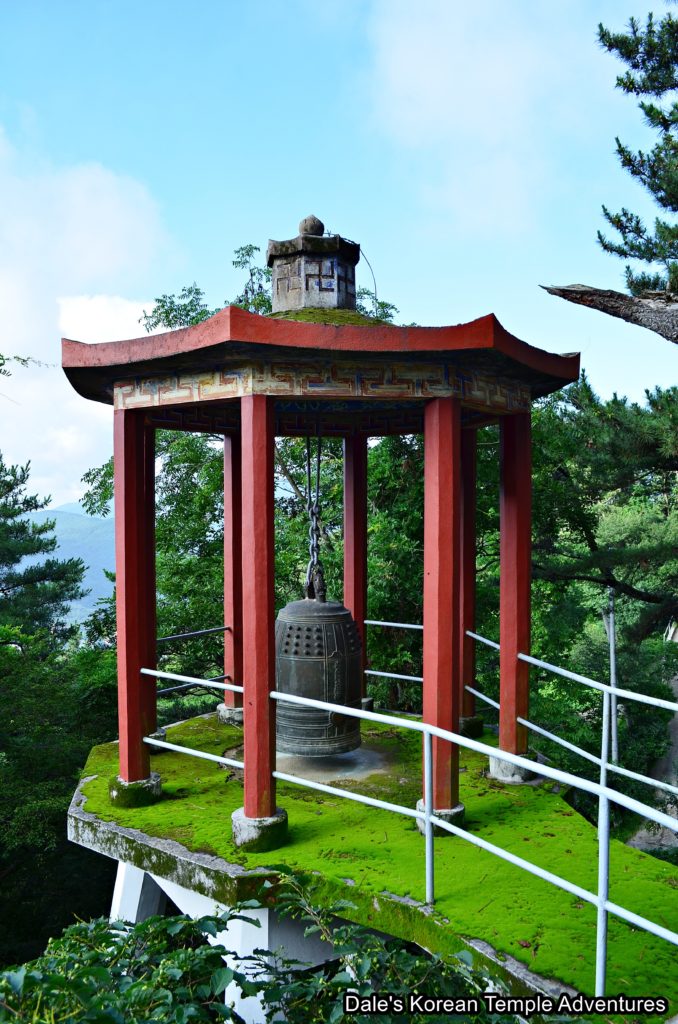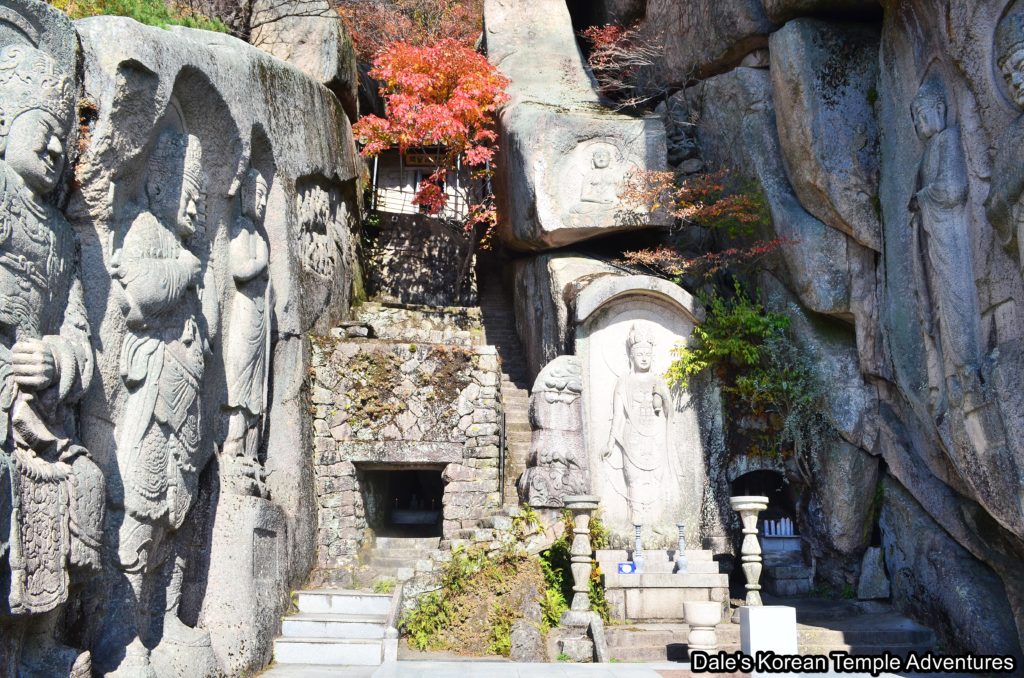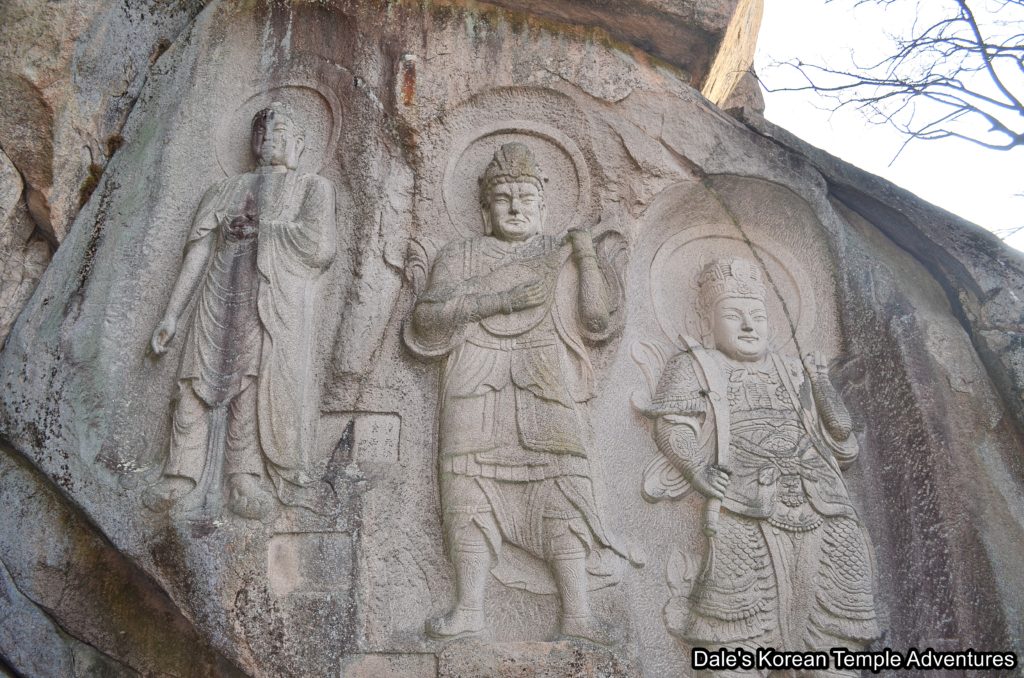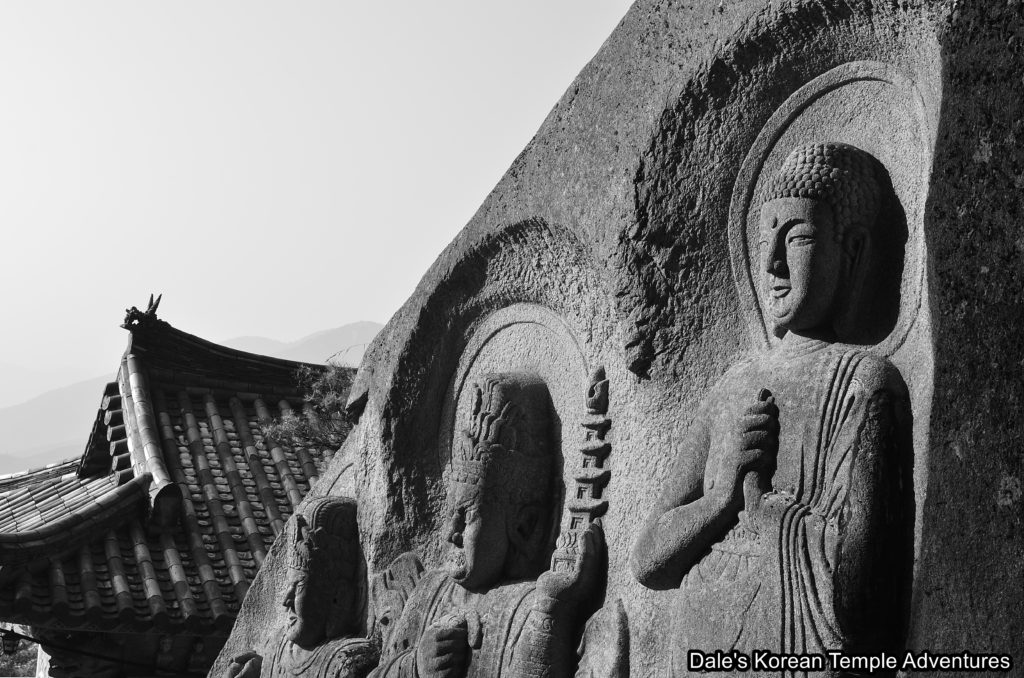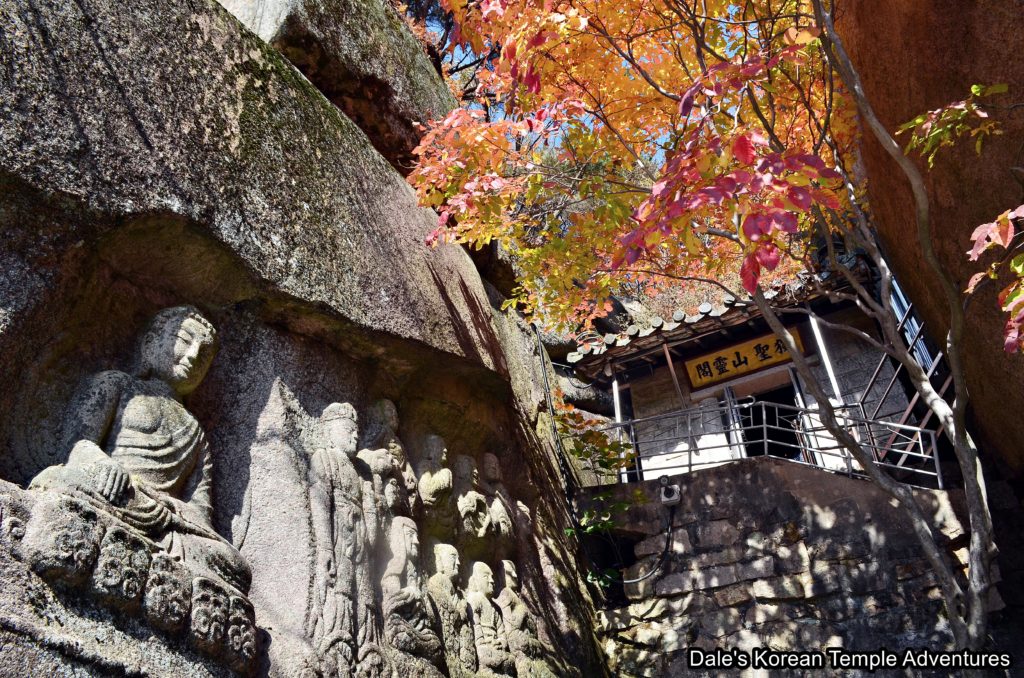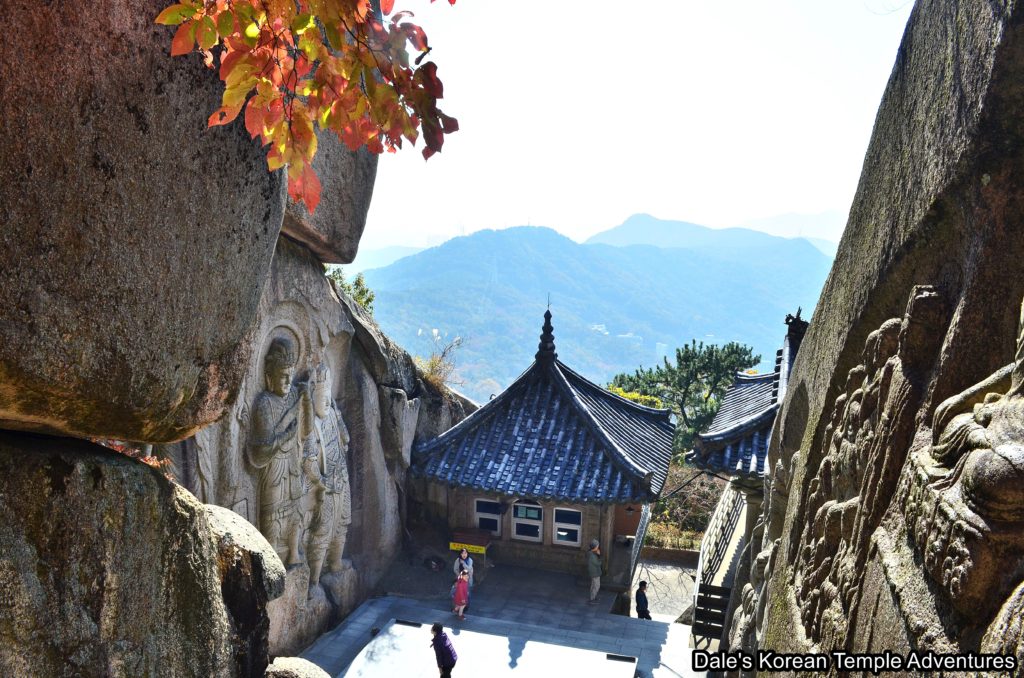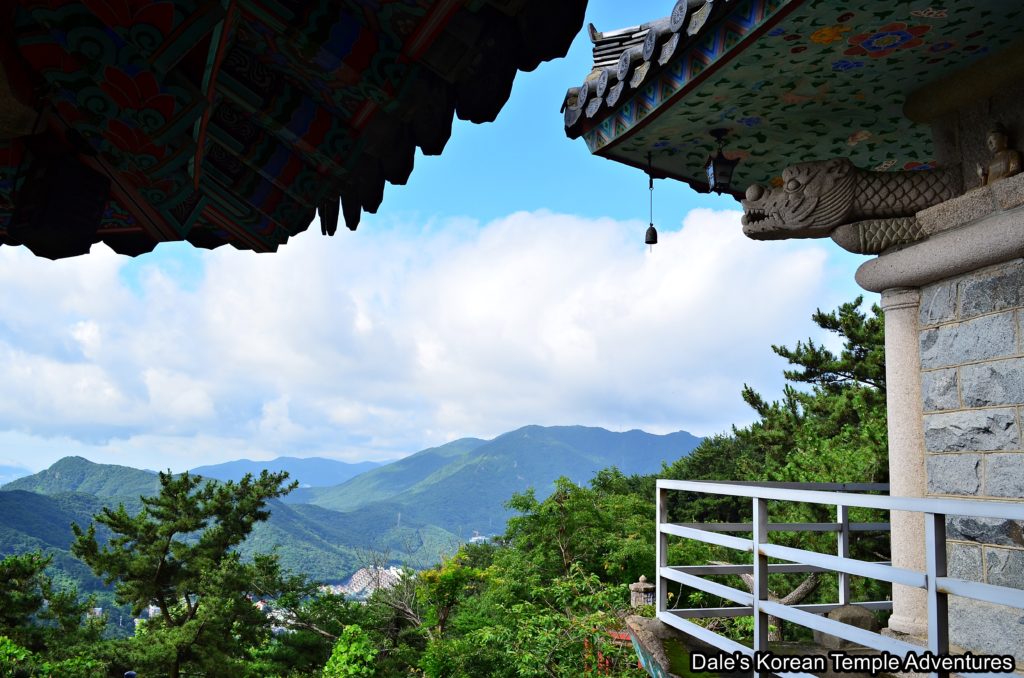Seokbulsa Temple – 석불사 (Buk-gu, Busan)
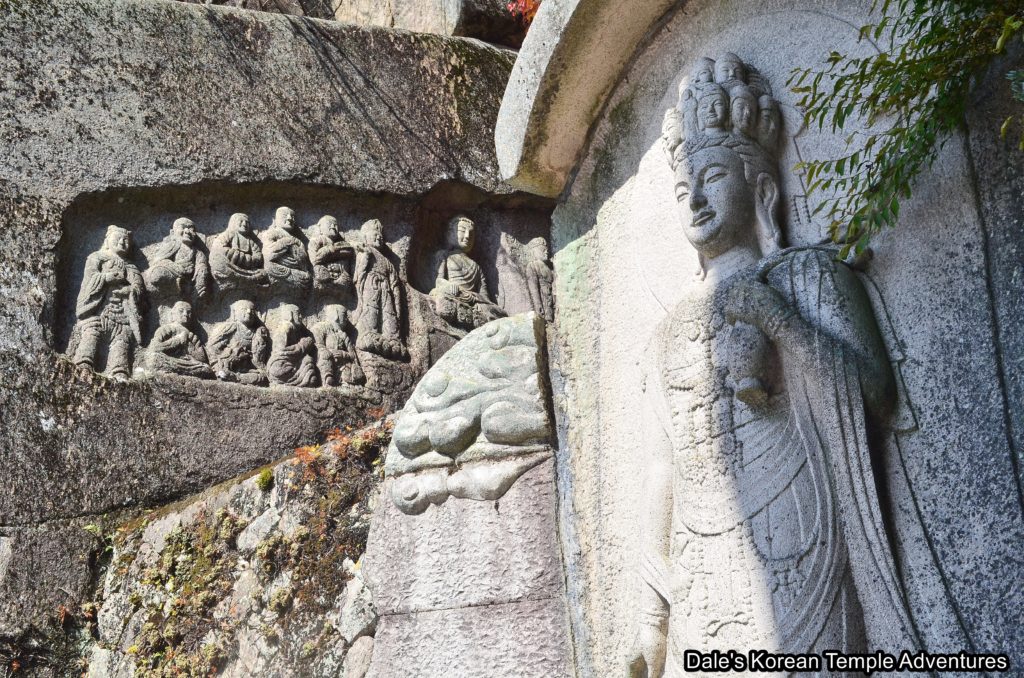
Temple History
Seokbulsa Temple in Buk-gu, Busan means, “Stone Buddha Temple” in English. First constructed around 1930 by the monk Jo Ilhyeon, the temple was originally called Byeongpungam Hermitage, or “Folding Screen Hermitage” in English. The original name of the temple comes from its location. Situated between Mt. Geumjeongsan and Mt. Baekyangsan, the folds of the rocks that make up the grounds of the temple look like a tall Korean folding screen. However, with the creation of the twenty rock carvings that make the temple so beautiful and famous, the name of the temple changed to Seokbulsa Temple. These rock carvings are believed to date back to the 1960s.
Temple Layout
Making your way up the steep paved road, and past the sentry-like bell pavilion that jets out from the face of the temple’s front facade, you’ll notice a gray metal entrance gate with a manja symbol on it. This was the former cave entrance that would bring you directly to the outdoor U-shaped sanctum that houses the twenty stone carvings. Unfortunately, this entry is now closed. But if you look down, you’ll see a stone demon face that was meant as a boot cleaner.
Next, you’ll come to the Iljumun Gate to the left of the temple grounds. Adorning this gate are some fierce Gwimyeon (Monster Mask) paintings. There are also intertwining dragons under the arch of the gate that are chasing wisdom pearls, or “Banya Jinju” in Korean, into their mouths.
Finally having officially entered the temple grounds, you’ll now have an amazing view of Busan off in the distance to your right. And on really clear days, you can actually see Gwangalli bridge and the sea off in the distance. Besides the view, you’ll also notice a pair of bell pavilions. The larger one houses the temple’s Brahma Bell with a wonderful Poroe dragon on top of it. A little further to the left, and across a janky looking concrete bridge that’s covered in moss, is a second and older bell pavilion with a smaller Dharma bell inside.
To the left of the temple’s bell pavilion, you’ll notice a collection of stone buildings. These include the visitors centre, the monks’ dorms, and the two story main hall. On the first floor sits a solitary statue of Seokgamoni-bul (The Historical Buddha). And on the second floor is shrine hall with hundreds of bronze coloured statues of the Buddha with a main altar centred by Birojana-bul (The Buddha of Cosmic Energy). If you look up at the eaves of this hall, you’ll notice stone sculptures of dragons and phoenixes. It’s not everyday that you get to see stone images of these animals. Typically they’re painted and made of wood. So look closely.
And to the immediate right of this hall is another two-story building. While the first floor seems to be unoccupied the second floor is home to a Chilseong-gak Hall with a beautiful Chilseong (Seven Stars) mural hanging all alone on the main altar.
It’s been the corridor between these two buildings, and up a small flight of stairs, that you’ll finally enter the inner U-shaped sanctum that’s home to the twenty stone carvings that date back to the 1960s. In the centre of the main altar stands an eleven headed statue of Gwanseeum-bosal (The Bodhisattva of Compassion) which is reminiscent of the one found at Seokguram Hermitage in Gyeongju. On either side of this main altar are a triad of ten metre tall reliefs. To the left are two of the Four Heavenly Kings and Birojana-bul. And to the right are the two other Four Heavenly Kings, as well as Yaksayeorae-bul (The Medicine Buddha).
There are numerous little cave shrines sprinkled throughout the face of the mountain. It’s only while climbing the steep and narrow stairs that you come come across a collection of sixteen Nahan (The Historical Disciples of the Buddha) carvings. There are eight on either side of Seokgamoni-bul (The Historical Buddha). And at the of the winding stairs is the shaman shrine hall dedicated to Dokseong (The Lonely Saint) and Sanshin (The Mountain Spirit). There used to be a narrow passageway that you could pass through to the right of the Dokseong/Sanshin-gak, but it seems as though it’s now been sealed off by a metal gate. Too bad, because it used to have some amazing views of Busan from this unique vantage point.
How To Get There
Seokbulsa Temple is one of the trickier and more strenuous temples to visit. From Mandeok subway station, line #3, you’ll need to take exit #2. From there, you’ll need to walk towards the upper and older tunnel. From here, follow the road uphill, past the numerous motels and restaurants. The walk should take anywhere from 45 to 60 minutes in length. Follow the signs along the way that say “석불사 – Seokbulsa.”
Or you can take this way, or you use subway line #1 and get off at the Oncheonjang station, and exit through exit #1. You’ll then need to follow the brown signs that point you towards Geumgang Park. Here, you can either take the cable car, which I recommend, or you hike to the top of the mountain. From where the cable car lets you off, find Nammun Village (남문마을). Nammun Village is a collection of restaurants. Walk through this village and head to the left, as you follow the stream. You’ll start to descend down towards the temple. The road will fork like a “Y,” follow the path that leads you right. Eventually, you’ll arrive at Seokbulsa Temple.
Overall Rating: 9/10
Seokbulsa Temple has always been a special temple to me. It was one of the very first temples I visited back in 2003. With an assortment of masterful rock carvings, with some standing ten metres in height, as well as its amazing location, it’s no wonder that Seokbulsa Temple is a must-see for any visitor to Busan.
